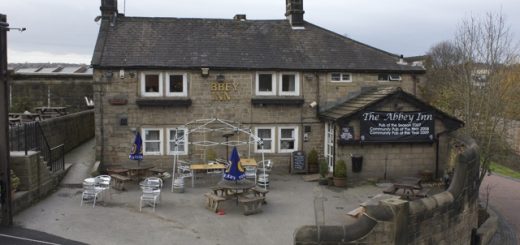The Old Rectory (Friary Court, Old Friary), Southfleet
Since the 1950s, the 14th century Grade II listed, Old Rectory on Hook Green Road has been divided into two residences, Friary Court and the Old Friary. The rectory, which had a reputation for being haunted in the 19th century, was probably built by Thomas de Alkham (Died 1356), rector of Southfleet from 1323 and the chancellor of Rochester Diocese from 1327.
The parsonage house is one of the most antient edifices of the kind in the diocese. It is built of stone, the windows large with pointed arches, and stone munions, much resembling those of a church. The porch is with a strong arch, and the whole has a most venerable and ecclesiastical appearance, and had much more so till the front of it was lately plaistered over and whitewashed, and the gothic windows altered and sashed, which has taken much from the antient beauty of it. Some of the windows on the south side next the yard still retain their old form. [The History and Topographical Survey of the County of Kent: Volume 2 (1797)]
According to Anna Dubuis in an article entitled ‘The ghosts and legends of north Kent’ which appeared in the Gravesend Reporter on Wednesday 31 October 2012 ‘Old Rectory in Southfleet has a ghostly nun’ David Mills in a News Shopper Website article called ‘NORTH KENT Is where you live haunted’ (30 August 2009) gave the following information regarding the haunting.
‘This old rectory, once an ancient friary dating back to the 11th century, has quite a haunted history.
In medieval times, three nuns were bricked up in the cellar and left to starve to death after they were caught in flagrante with some monks.
One of the nuns, a plump young woman no more than five feet tall, is still known to haunt the place.
A stained glass window commemorates a visit in 1874 by the Bishop of Rochester to exorcise the ghost of a female nurse whose body was also believed to be walled up in the cellars.
In the mid-19th century, when the nurse was caring for a severely ill patient, it is suggested she tried to fiddle the patient’s will in her favour.’
The above article mentions a nurse that was according to local legend walled up in the cellar. This ghost, which has been referred to as the Brown Lady in other accounts and in some as a nun reputedly haunted the Monks Room and it was here in 1874 that Thomas Legh Claughton (Born 6 November 1808 – Died 25 July 1892) Bishop of Rochester, tried and failed to exorcise the spirit.
The ghost was said to have been experienced several times between 1891 and 1898*. These experiences included hearing the sounds of rustling paper, footsteps, the movement of starched clothing and the opening and closing of doors. Her apparition has also apparently been seen, though sometimes only partially. One servant gave the following description “I stood at the top of a small stair just outside the room, and to my surprise saw a nurse dressed in a clean staff uniform, standing at the end of the passage. Feeling little nervous about seeing her there, I very timidly walked down the three stairs and along the passage towards her. As I did so, she began to walk forwards as if to meet me, then she seemed to drift gently backwards, facing me all the time, until she reached the door of a small room at the end of the passage. There, to my surprise she vanished backwards through the door.”
Although I believe the haunting has now ceased, I have come across a reference to a possible experience as late as 1920.
I have read a few accounts now regarding this reputed haunting and I think the stories have gotten confused over time. Some accounts suggest the nurse was bricked up because she was caught having physical relations with a monk. Others that it was one nun not three that were bricked up and yet another that a monk also got bricked up alive. Perhaps they all did.
*The Rector in 1893 was J H Hazell, I am unsure whether he was rector throughout the whole 1890s.






















Recent Comments